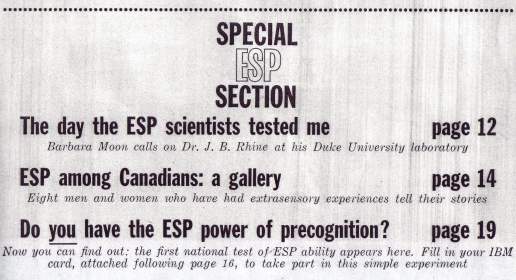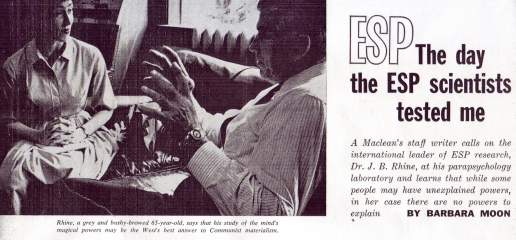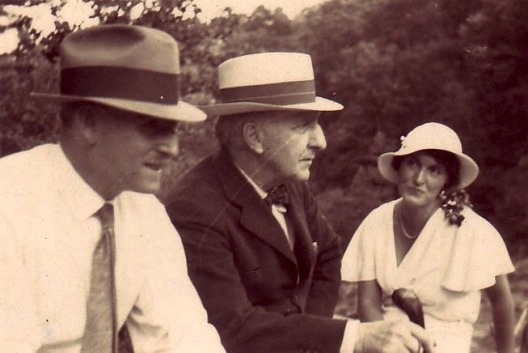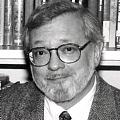In 1958, CBS aired a television program about a poltergeist case that the Parapsychology Lab had investigated earlier in the year. A huge outpouring of letters to the lab followed the broadcast and lasted for months. A woman named Elma Serton wrote them about a haunted house in upper Manhattan. She didn’t give the address unfortunately, but she described the house well enough that I thought there was a chance I could find it.
When I got uptown however, based on the description, the houses on the Bronx side of the river seemed like the best candidates. But the woman had clearly called her ghost a “Manhattan ghost.” I wondered if by any chance this area was once considered Manhattan, and it turns out it was!
I found a house that seemed like it could be the one she described, but who knows what other houses lined the river back then. There’s also another spot that I want to go back and check.
I looked for Elma Serton, who described herself as an artist by training, and I believe I found her, but the Elma I found died in 1992, in Maine. She said that she wrote up the account like a story, but everything in it was true except for one sentence (which I removed) and while her mother was no longer living to confirm her story, her father and sister were. If any friends or relatives of Elma’s are still living I’d love to hear what she was like, or more about this story!
What follows was written by Elma Serton. I’ve included some of the photos I took while searching for the house. The second photograph was taken behind the house I thought might be the one. Although it’s in ruins now, it could have once been a lovely garden.
Ghost in Manhattan
“Quite some years ago we moved in the early fall into the downstairs apartment of a two-family house in upper Manhattan. The house was rather uniquely situated, jutting out high above the Harlem River and overlooking Baker Field and Inwood Park. A bend in the river, where [Spuyten Duyvil] cut off the view, just barely prevented us from seeing where it flowed into the Hudson. One could sit in the garden and see the boats passing. At night one heard their far-off whistle as they rounded the bend, warning the bridge keeper to open the bridge at 225th Street so they could be on their way to the East River piers with their loads of sand and stone.
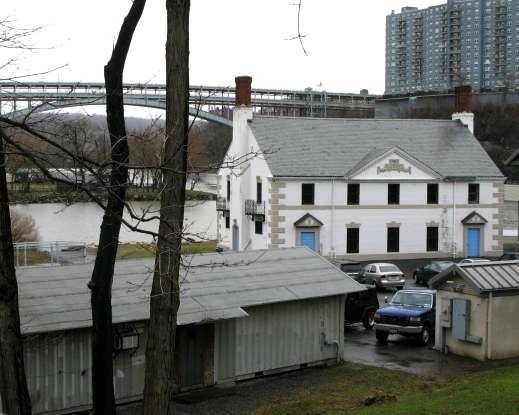
“The house was built with love because of the view and had been converted into a two-family dwelling. Any Manhattanite was bound to feel fortunate indeed to be living in this spacious-roomed apartment where the smell of ripe grapes came in through the open windows that fall and an occasional ruby-throated hummingbird darted in and out of the vines which grew against the walls to leave a tiny scar on each grape it pierced.

“In the garden there were tomatoes and there were corn, Country Gentlemen and Golden Bantam. There were also peaches and green peppers and, of all things, luscious dark purple figs with their delicate flavored pink meat and beautiful large leaves. In the late summer the day lilies spread burnt-orange petals, like butterflies, all over the garden and cosmos nodded in the breeze.
“Renters of the apartment usually stayed for many years, just as we did, for where would one find as sunny and airy a place on the whole of Manhattan. One would be loath to leave this house unless forced by circumstances which would give one more advantages. This feeling of not wanting to leave must have been rather strong for we felt at the time that whoever had been living there had left out of necessity and not because they wanted to. This was later confirmed by our landlady.
“Although we loved the apartment and everything connected with it we now and then had the strange feeling of not quite belonging, a feeling as if the apartment was not completely ours, a sense of unrest, almost as if someone had just left the room on hearing one of us enter and resented the intrusion. This feeling persisted and grew stronger as we went into our first summer there. I think it was my mother who first remarked that she heard a sound like the impatient snapping of fingers in the dining room. Our cat would suddenly stop washing her face, her paw in mid-air, to stare around the room as if at someone passing who had rudely distracted her from her task.

“One night my sister woke up because of someone coughing loudly right near her ear. We told her she must dreamt or imagined it but she insisted that loud coughing had done it. However, as we by that time all had heard the snapping of the fingers I started thinking and now and then my mother and I discussed the matter.
“My mother learned [from our landlady] that a family of two sisters and two brothers, all elderly, had lived in our apartment. They had all loved it but the sisters had been compelled to move when the brothers died in short succession. Our landlady, herself well along in her seventies and still full of zestful life, who believed the superstition that where two had died a third must follow, was very reluctant to talk about the former tenants because she did not want to lose us. She first carefully broached the subject of her superstitious viewpoint and when she realized that we did not share it [she] tentatively admitted that she would never live in an apartment where two people died.
“A few weeks after our landlady’s revelation both my parents were awakened in the night by loud persistent rapping on their bedroom window and my father got up to open the front door thinking that an urgent cable might have arrived, but there was no one there. He told my sister and myself rather puzzledly but at the same time with glee about the incident for he still considered it all a joke and he likes jokes.

“All was peaceful for a while and we all enjoyed the warm summer nights coming in from the garden where, a lonely firefly now and the shot through space, into the apartment with all its open windows and the moonlight splashing on the oak floors.
“Then, on one of those warm moonlight nights I woke with a terrific start because the door of my room flew open with a crash. I remember looking at the gaping doorway and seeing the curtains billowing out as if caught in a gust of wind. I heard someone walking in the kitchen and immediately quieted down thinking that my mother was walking around and [I was] expecting her to appear in the doorway. Imagine my shock when a small man wearing a striped bathrobe and something like a turban wrapped around his head peered seemingly curiously at me. “Thieves!”, I thought in panic and my heartbeats must have been almost audible. I caught myself blurting out, “Who’s there!” The figure withdrew and I waited for the footsteps, my eyes riveted on the black space in the door frame … Once more the little man appeared, this time only his head, staring at me from around the corner, then silence … while I was waiting … waiting … for the footsteps which never came.
“How long I lay like that I do not know. The clock striking three gave me the courage to get up and wake my sister in the adjoining room. I told her that there was a thief in the house and we cautiously tiptoed down the hall toward my parent’s room. Like most mothers, my mother had already sensed something or heard us in the hall and [she] came to meet us. We then all three proceeded to the kitchen and then inspected the rest of the apartment where nothing was out of place and no silver was missing, nor were any window screens gone or cut.
“We looked at each other and then we knew … this was it, or whatever it was! “This has got to stop,” my mother said and her plan of action was born on the spot.
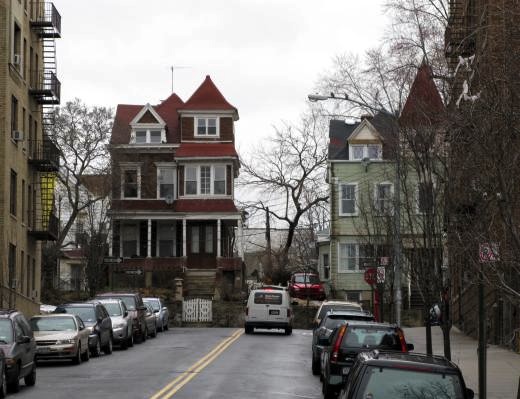
“During one of the ensuing days when I was home I heard my mother walking through the apartment from room to room talking to someone it seemed to me. I felt embarrassed as I knew there was no one there and that she was full of what had happened, so I listened from a distance. She was talking to someone whose name seemed to be Fitz Simmons and whom she frequently accosted as such. I learned that she pressed our landlady into telling her the name of the former tenants. It was Fitz Simmons [maybe it was the last name Fitzsimmons and not a first and last name the way Elma has it written] and there had been two brothers, the one tall, who had been an actor and the other small, who had been rather grouchy because of frequent headaches for the relief of which he used to wear a towel wrapped around his head. He was the one who would often potter around in the kitchen at night cooking something for himself.

“My mother immediately came to grips with Fitz Simmons. She told him in no uncertain term to get out and stay out! We were the rightful tenants now and he was on another plane. He had nothing to seek in our apartment anymore to which even to human law he had no right since both his sisters had moved. If he wished to see them he should go there. This went on for several days.
“Needless to say Fitz Simmons never appeared again as long as we lived there and from then on our apartment was really ours. The atmosphere cleared; no more impatient snapping of fingers; no more staring cat. We lived for more than ten years there, after which we moved into our own home.
“Once in a while we recall with wonder this unusual incident which really and truly happened here in Manhattan, a borough of New York City.”
– Elma Serton
I am now looking in the Inwood or Marble Hill area of Manhattan for a Fitz Simmons, or someone with the last name Fitzsimmons, who lived there long before 1958. The only clues I have are that one of the brothers was an actor, and they had two sisters.
